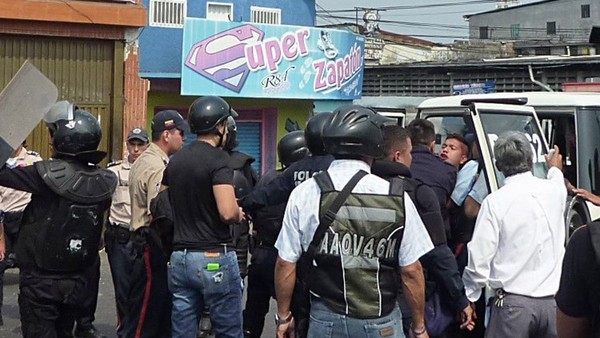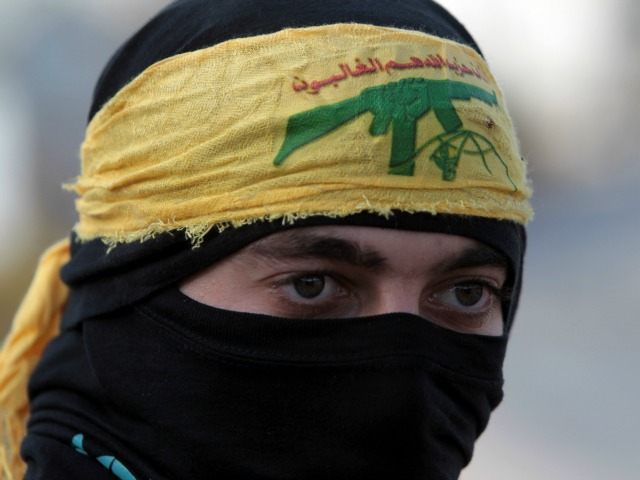Statement of Secretary Lew on the Venezuela Executive Order
3/9/2015U.S.Treasury: We are committed to defending human rights and advancing democratic governance in Venezuela through the use of financial sanctions.We will use these tools to target those persons involved in violence against anti-government protesters, serious human rights abuses, and those involved in the arrest or prosecution of individuals for their legitimate exercise of free speech.
Corrupt actions by Venezuelan government officials deprive Venezuela of needed economic resources that could be invested in the Venezuelan people and used to spur economic growth. These actions also undermine the public trust in democratic institutions and the human rights to which Venezuelan citizens are entitled. This Executive Order will be used to protect the U.S. financial system from the illicit financial flows from public corruption in Venezuela.
Beginning in 2013, perhaps earlier:
Venezuela is running out of money fast and has started selling its gold
CNN: The cash-strapped country could default by next year when lots of debt payments are due. Venezuela’s reserves, which are mostly made up of gold, have fallen sharply this year as the country needs cash to pay off debt and tries to maintain its social welfare programs.
Venezuela owes about $15.8 billion in debt payments between now and the end of 2016.
But it doesn’t have enough to make good on its payments. Venezuela only has $15.2 billion in foreign reserves — the lowest amount since 2003. A lot of those reserves are in gold.
Less than $1 billion of Venezuela’s reserves are in cash, and it has a couple billion in reserves at the IMF.
Venezuela risks a descent into chaos
Police arrest students during a protest against Venezuelan President Nicolas Maduro in San Cristobal. Two officers died and four more were hurt
FT: At the main morgue of central Caracas, the stench forces everyone to cover their nostrils. “Now things are worse than ever,” says Yuli Sánchez. “They kill people and no one is punished while families have to keep their pain to themselves.”
Ms Sánchez’s 14-year-old nephew, Oliver, was shot five times by malandros, or thugs, while riding on the back of a friend’s motorcycle. His uncle, Luis Mejía, remarked that in a fortnight three members of their family had been shot, including two youths who were shot by police.
An economic, social and political crisis facing Nicolás Maduro, Venezuela’s unpopular president, is being aggravated by a rise in violence which is prompting fears that this oil-rich country risks becoming a failed state.
“What can we do?” Mr Mejía asks. “Give up.” The morgue employee in charge of handling the corpses notes that a decade ago he received seven or eight bodies every weekend. These days, he says, that number has risen to between 40 and 50: “This is now wilder than the wild west.”
Critics say that the Venezuelan government is increasingly unable to provide citizens with water, electricity, health or a functioning economy which can supply basic food staples or indispensable medicines, let alone personal safety.
Last month alone, Venezuelans learned of the summary execution of at least 17 gold miners supposedly by a mining Mafia, the killing of two police officers allegedly by a group of students who drove a bus into a barricade, and a hostage drama inside a prison at the hands of a grenade-wielding criminal gang. On Wednesday, three policemen were killed when an armed gang busted a member out of a lock-up in the capital.
At least 10 were killed in a Caracas shanty town after a confrontation between local thugs armed with assault rifles, while a local mayor was gunned down outside his home in Trujillo state last month. There are widespread reports of lynchings.
All this is creating a broad unease that Mr Maduro is unable to maintain order. Venezuela has the world’s fastest inflation and its dire recession is worsening. Mr Maduro last week declared every Friday a holiday for the next two months to save electricity as a prolonged drought has exacerbated chronic power shortages. There is a lack of basic goods. Analysts warn that the economic crisis risks turning in to a humanitarian one.
The evidence of state failure is very concrete in the country that sits on top of the world’s largest oil reserves
– Moisés Naím, Carnegie Endowment for International Peace
“Failed state is a nebulous concept often used too lightly. That’s not the case with today’s Venezuela,” says Moisés Naím a Venezuelan distinguished fellow at the Carnegie Endowment for International Peace. “The evidence of state failure is very concrete in the country that sits on top of the world’s largest oil reserves.”
Venezuela is already one of the world’s deadliest countries. The Venezuelan Observatory of Violence, a local think-tank, says the murder rate rose last year to 92 killings per 100,000 residents. The attorney-general cites a lower figure of 58 homicides per 100,000.
In 1998, a year before former leader Hugo Chávez took office, the rate was 19 per 100,000, says the think-tank’s director Roberto Briceño León, adding that after 17 years of socialist “revolution”, it is the poor who make up most of the victims.
“I think it is evident that the Venezuelan state cannot act as a state in many areas of the country, so it could be considered failed,” says Mr Briceño, adding that the state now “lacks a monopoly on violence”.
But the state is indeed to blame for some of that violence, according to a report by advocacy groups Human Rights Watch and the Venezuelan Human Rights Education-Action Programme presented to the Inter-American Commission on Human Rights.
“Venezuelans are facing one of the highest murder rates in the hemisphere and urgently need effective protection from violent crime,” said José Miguel Vivanco HRW’s Americas director. “But in multiple raids throughout the country, the security forces themselves have allegedly committed serious abuses.”
Their findings show that police and military raids in low-income and immigrant communities in Venezuela have led to widespread allegations of abuse, including extrajudicial killings, mass arbitrary detentions, maltreatment of detainees, forced evictions, the destruction of homes, and arbitrary deportations.
The government usually blames violence within its borders on Colombian rightwing paramilitaries engaged in a war against its revolution. But as David Smilde and Hugo Pérez Hernáiz of the Washington Office on Latin America, a think-tank, recently wrote: “Attributing violence in Venezuela to paramilitary activity has been a common rhetorical move used by the government over the past year, effectively making a citizen security problem into a national security problem.”
For many Venezuelans it no longer matters who is to blame. “It is a state policy of letting anarchy sink in,” says a former policeman outside the gates of a compound in Caracas.
That former police station now houses the Frente 5 de Marzo, one of the political groups that consider themselves the keepers of socialism’s sacred flame. The gates bear the colours of the Venezuelan flag and are marked with bullet holes. The man believes there is something akin to a civil war going on.
“Venezuela is pure chaos now. It seems to me there is no way back,” he says.
Iran has been outsourcing for many years and that includes to Iran:
Iran’s ambassador to Venezuela said Tuesday that a check worth about $70 million, found by German authorities in the luggage of Iran’s former central bank chief, was going to be used by an Iranian company for its expenses while building public housing in Venezuela.
Iranian Ambassador Hojattolah Soltani made the remarks in an interview with the Venezuelan television channel Globovision, saying the check for 300 million Venezuelan bolivars was to be used for the expenses of the Kayson Company, a Tehran-based construction business that is building thousands of homes for the Venezuelan government.
The Iranian ambassador noted that the man with the check whom German authorities stopped last month is not currently a government official. Soltani said that Tahmasb Mazaheri, a former chief of Iran’s central bank and former economy minister, has been working as an adviser to the Iranian company.
Venezuelan authorities had to comment on the issue, and stressed that everything was above board (link is external). The Iranian Ambassador to Caracas would later recant his opinion, as cited by AP above, saying about the caught check-courier (link is external) “[he] is by no means an official of the Government (of Iran); neither has his name been affixed to the confiscated check”, and adding that the check “was signed in Iran and Mr. Mazaheri was on his way to Venezuela to bring the check to cash it in Banco Venezuela.”
So Mazaheri, who is not an official of the Government of Iran as per Iran’s Ambassador to Venezuela claims, was entrusted to carry a check worth $70 million, just like that? Mazaheri was a director of Banco Internacional de Desarrollo (link is external), an OFAC-designated entity targeted by the U.S. Treasury Department “for providing or attempting to provide financial services to Iran’s Ministry of Defense and Armed Forces Logistics (MODAFL). (link is external)” The European Union also included the bank in its list of sanctioned entities involved in “nuclear or ballistic missiles activities
– See more at: http://infodio.com/250414/venezuela/corruption/kayson/tahmasb/mazaheri#sthash.8z4z99bY.dpuf




 Fine art dealer and billionaire David Nahmad. Photo: AP Photo / Lionel Cironneau
Fine art dealer and billionaire David Nahmad. Photo: AP Photo / Lionel Cironneau








